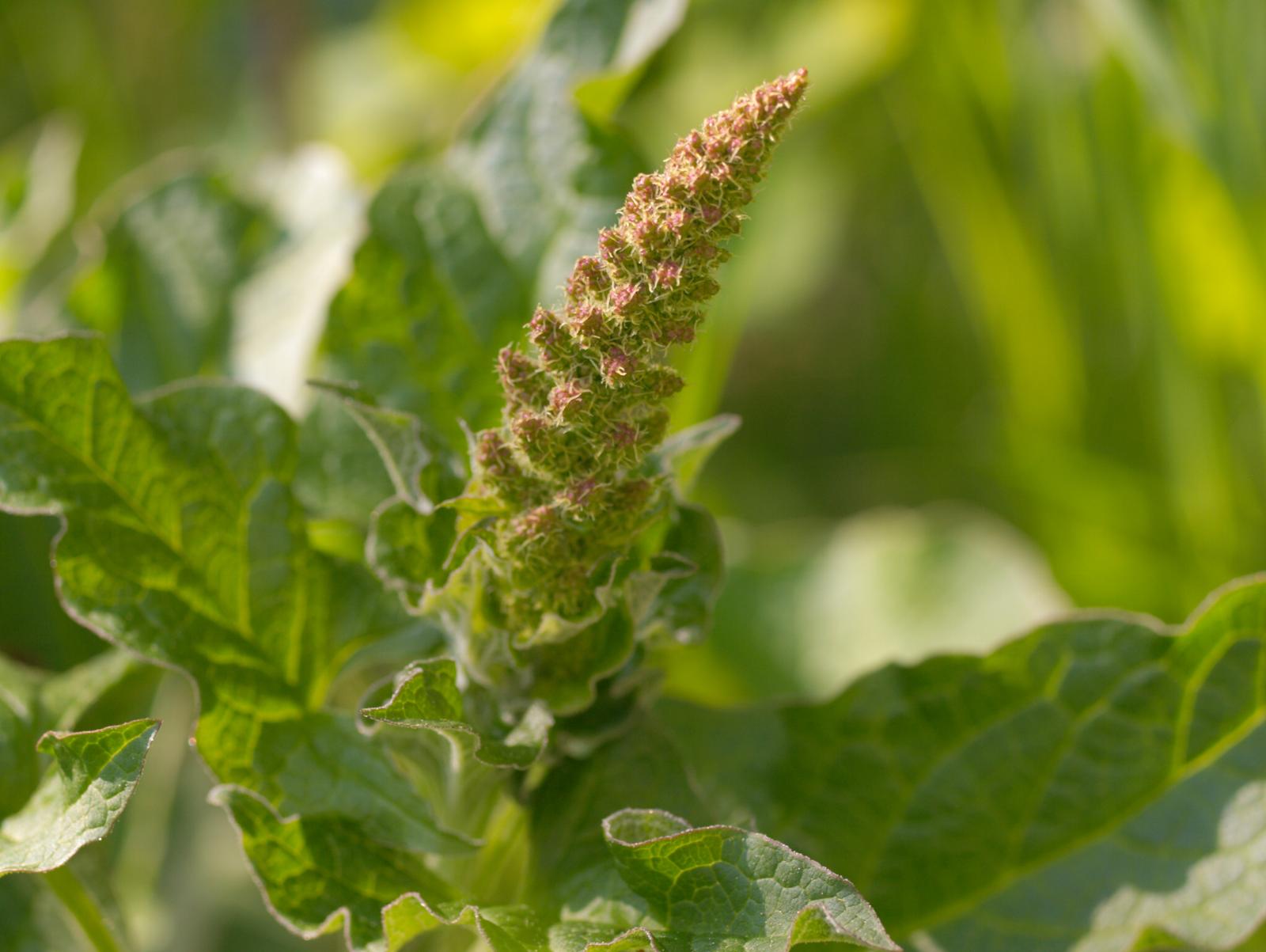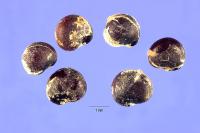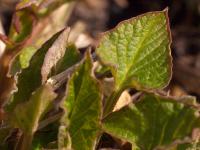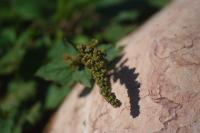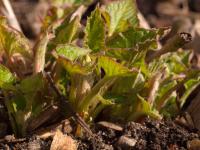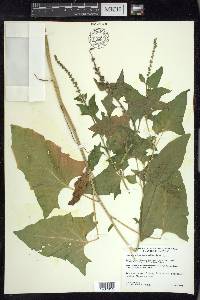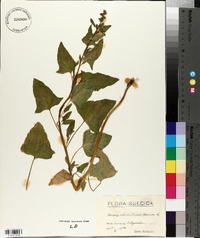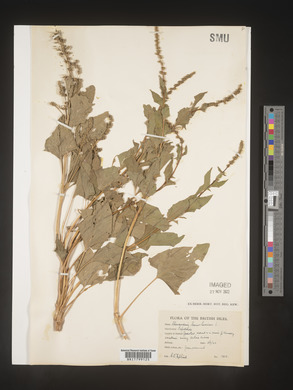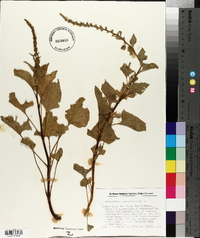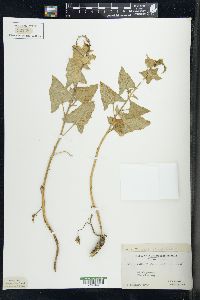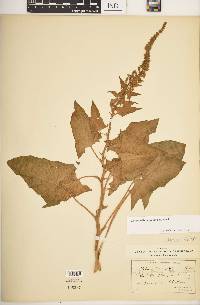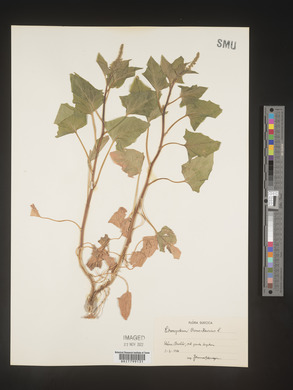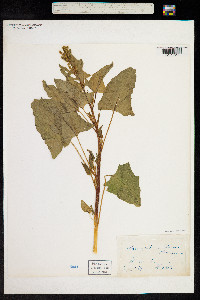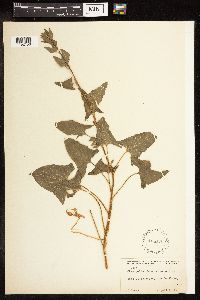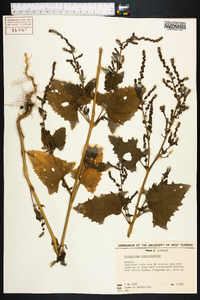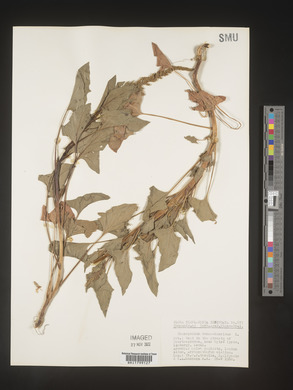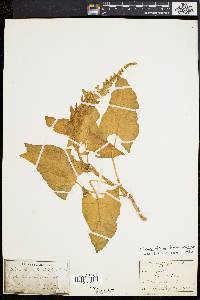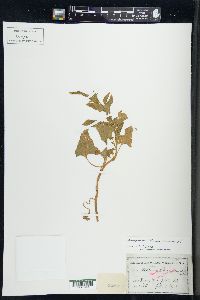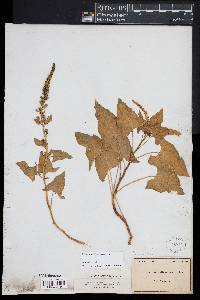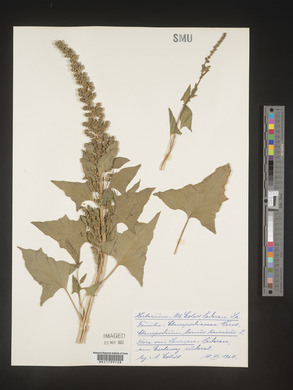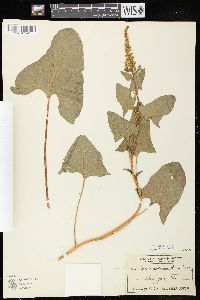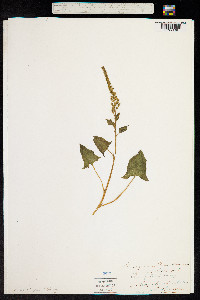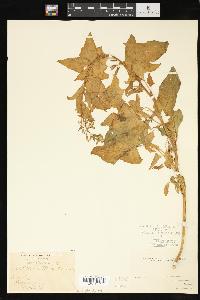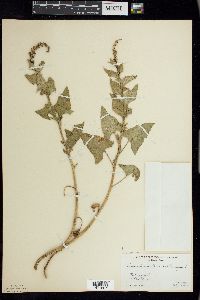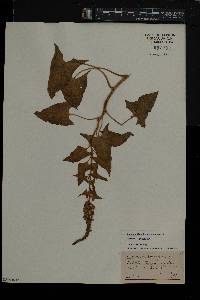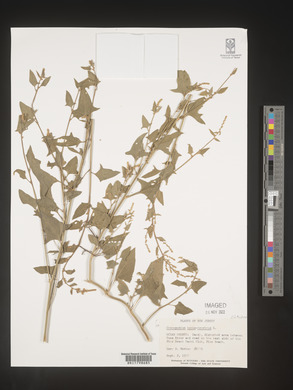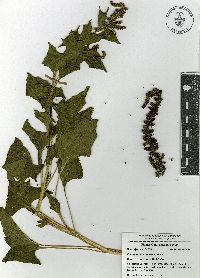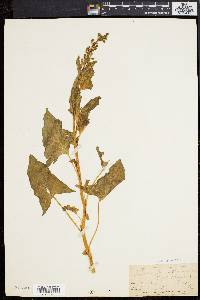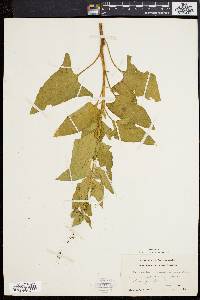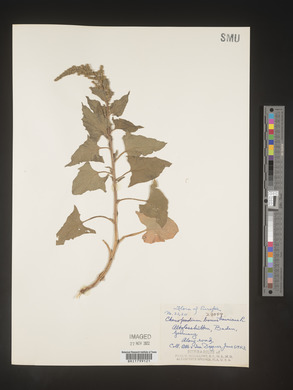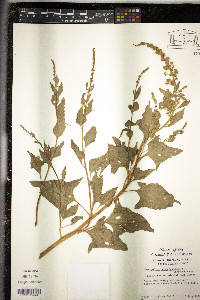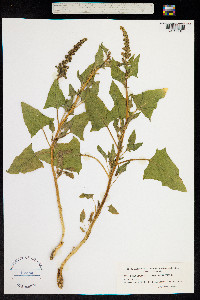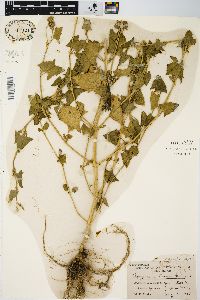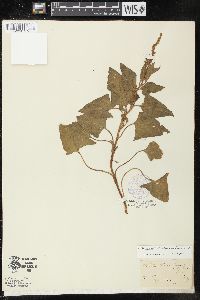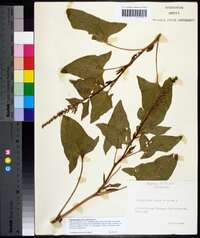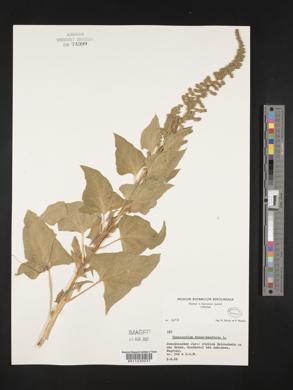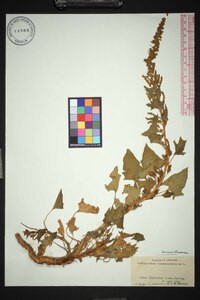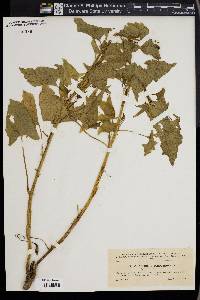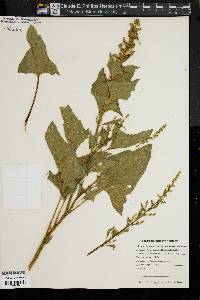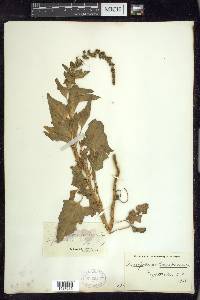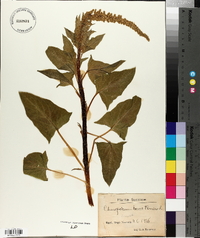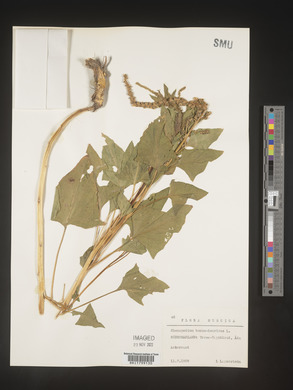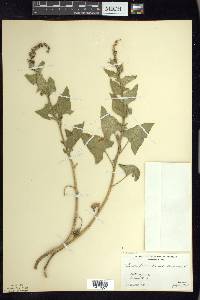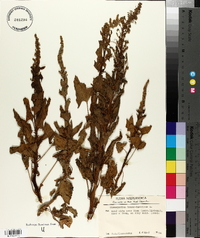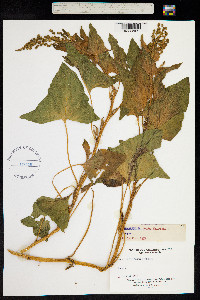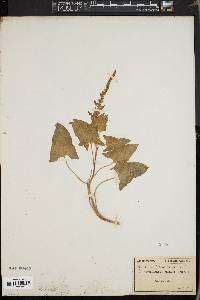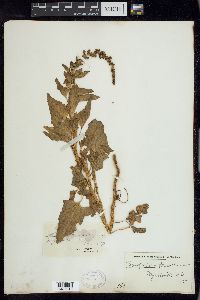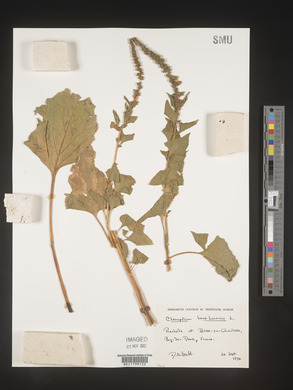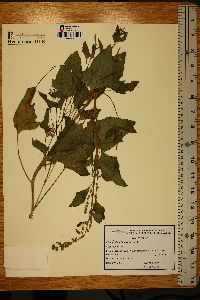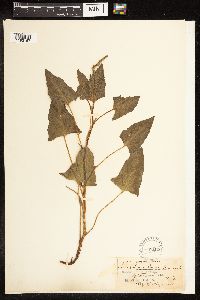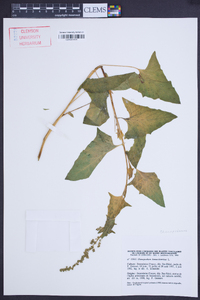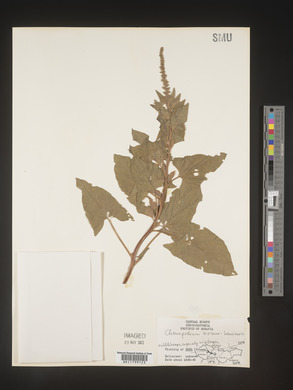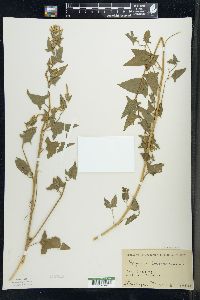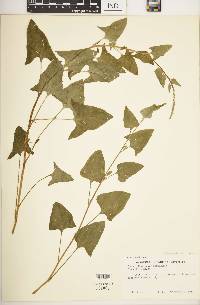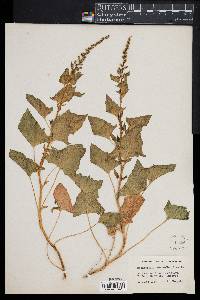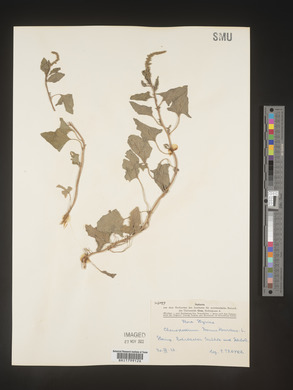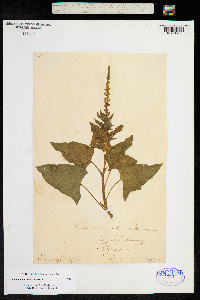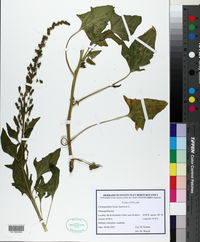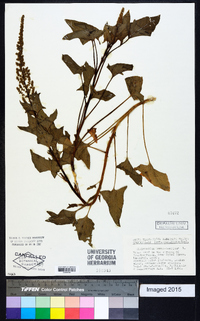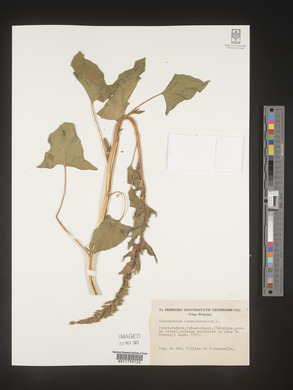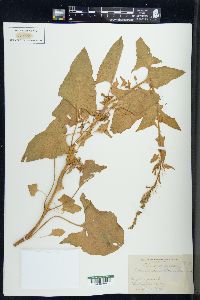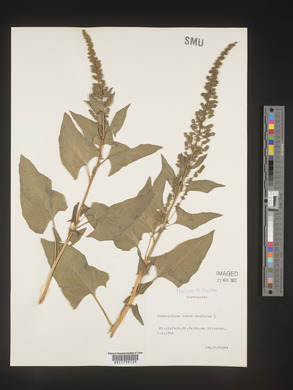
|
|
|
|
Family: Amaranthaceae
Good King Henry
[Blitum bonus-henricus (L.) Rchb.] |
Stems erect to ascending, unbranched, 2.5-7.5 dm, somewhat viscid and farinose. Leaves nonaromatic; petiole 1-12 cm; blade triangular to broadly hastate, 4.5-10 × 3-9 cm, base truncate, cordate, or hastate, margins entire, apex acute (acuminate), adaxially sparsely farinose. Inflorescences: dense glomerules sessile on terminal and axillary spikes, spikes 5-19 cm; glomerules 3-5 mm diam., flowers developing at about same time; bracts absent. Flowers: perianth segments connate into 0.4-0.6 mm tube, lobes oblong or elliptic, 0.8-1.5 × 0.5-1.1 mm, apex obtuse, rounded or truncate, scarcely abaxially keeled throughout, glabrous, not covering fruit at maturity; stamens (4-)5; stigmas 2-4. Achenes obovoid; pericarp adherent, ± smooth. Seeds obovoid or rotund, 1.5-2 mm in diam. margins not rounded; seed coat black, rugose. Fruiting early summer-fall. Waste areas and cultivated ground; 0-200 m; introduced; Alta., N.B., N.S., Ont., Que.; Conn., Ill., Ky., Maine, Mass., Mich., N.J., N.Y., Pa., R.I.; native to mountains of Europe. Chenopodium bonus-henricus is widely grown throughout the temperate regions, occasionally escaping.
Perennial herb with a thick root 25 cm - 0.75 m tall Stem: upright to ascending, unbranched, somewhat sticky-glandular (viscid), mealy. Leaves: alternate, numerous, on a 1 - 12 cm long stalk, 4.5 - 12 cm long, 3 - 9 cm wide, triangular to broadly arrowhead-shaped (hastate) with a flat, heart-shaped, or hastate base and pointed tip, sometimes wavy along the margins, sparsely mealy beneath. Inflorescence: a 3 - 5 mm wide, dense, stalkless cluster of flowers (glomerule), which together form a 5 - 19 cm long spike. Flowers: greenish, small, with four or five sepals and no petals. Sepals fused into a 0.5 mm long tube. Lobes 0.8 - 1.5 mm long, 0.5 - 1 mm wide, oblong to elliptic with a blunt, rounded, or flat apex, scarcely keeled beneath. Stamens five. Stigmas two to four. Fruit: one-seeded (achene), not enclosed in the persistent, incurved sepals, reverse egg-shaped, more or less smooth, thin-walled. Wall (pericarp) adherent to the seed. Seed upright, black, shiny, 1.5 - 2 mm wide, reverse egg-shaped to rounded, not round-margined, wrinkled. Similar species: No information at this time. Flowering: July to October Habitat and ecology: Introduced from Europe. A rare weed found in waste ground. Occurence in the Chicago region: non-native Etymology: Chenopodium comes from the Greek words chen, meaning goose, and podion, meaning "little foot," referring to the leaf shape of some species. Bonus-henricus means "good Henry." Author: The Morton Arboretum Erect or ascending, thick-rooted perennial to 7 dm; lvs numerous, long-petioled, broadly triangular-hastate, to 12 cm, entire or undulate; fls in small glomerules aggregated into a terminal, branching, paniculiform infl; sep mostly 4 or 5, erose; styles 2(3), persistent and conspicuous, 1-1.5 mm in fr; seeds all or mostly erect, black, shining, lenticular with a raised margin, 1.5-2 mm wide; 2n=36. Native of Europe, occasionally found as a weed in our range. Gleason, Henry A. & Cronquist, Arthur J. 1991. Manual of vascular plants of northeastern United States and adjacent Canada. lxxv + 910 pp. ©The New York Botanical Garden. All rights reserved. Used by permission. |
This project was made possible in part by the Institute of Museum and Library Services [MG-70-19-0057-19].
Powered by Symbiota

